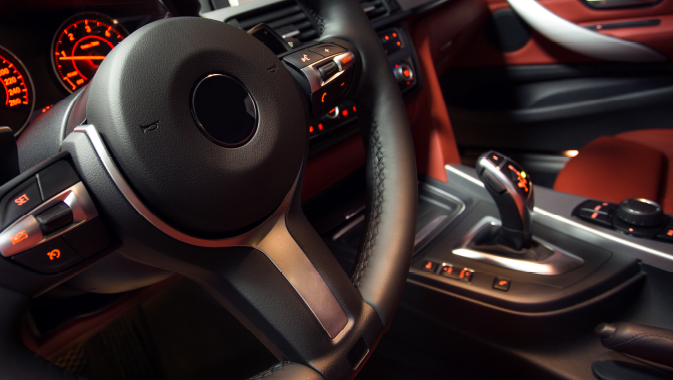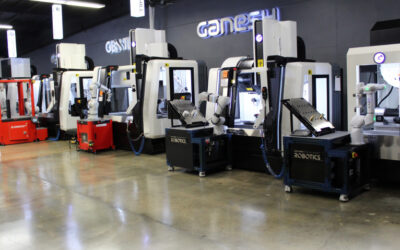Known for his many timeless quips about cars and manufacturing, American automobile visionary Henry Ford and founder of the company bearing his name famously said, “Any customer can have a car painted any color that he wants so long as it is black.”
~
Though the name is synonymous with the rise of the personal vehicle, the Ford Motor Company did not invent the car – originally conceptualized by Renaissance artist and innovator Leonardo Da Vinci around 1478, developed and refined by many others, and patented by German engineer Karl Benz in the 1880s – but it was Ford who brought reasonably-priced, gas-powered automobiles to the masses.
Personal vehicles existed for decades before the Ford Motor Company, but were scarce because they were costly, affordable to only the very wealthy. By improving upon the production line method of assembly, Ford introduced the first Model T to the market in October of 1908. Priced at $825 for a basic model (about $18,000 U.S. today), the first Ford vehicles were built for affordability, practicality, and durability, not luxury. Even fundamental safety features we take for granted, like seatbelts, were decades away, and heating, air conditioning, and interior padding were but a distant dream.
As functional as the four-cylinder, 22-horsepower Model T was, selling an estimated 15 million units in less than 20 years, times changed, and consumers wanted personal vehicles which were more luxurious, spacious, and able to exceed the Model T’s top speed of 40 miles per hour. With production of the iconic black car ceasing in 1927, the door was open for Ford and manufacturers like General Motors, Chrysler, independents Studebaker, Hudson, and Nash in America, and European makers Austin, Renault, Citroën, Peugeot, Benz, and of course, Germany’s Volkswagen, to embrace the growing market. Following World War II, many other car companies began production, including the American Motor Company (AMC) and Japan’s Nissan, Honda, and Toyota.
With automobile manufacturers producing basic, affordable vehicles over the years – the box-like Chrysler K and Russia’s so-called ‘people’s car,’ the ultra-cheap Lada, come to mind – the market for basic vehicles still exists today, with cars like the Chevrolet Spark and the Nissan Versa sedan. Priced starting under $13,000 U.S. brand new, these and other cars provide good fuel economy, and even come with perks like Bluetooth, four-speaker systems, USB audio jacks, and keyless entry. Still, many of today’s consumers are more than willing and able to pay for features unprecedented in the automotive industry.
Manufacturing total comfort
With many previously ‘extra’ features now standard in personal vehicles, the quest for greater comfort and technology is never-ending. Long gone are the days when a built-in MP3 player and heated seats were enough; today, buyers want cars which are not only sleek and stylish, but boast exceptional luxury, and technology rivalling high-end home theaters outfitted with state-of-the-art sound and lighting systems inside. For many owners, having a functional car simply isn’t enough anymore.
One of the factors driving this pursuit for high-end amenities comes down to the overwhelming amount of time we spend in our cars. For many, our vehicles are no longer just for getting to work and back, but for taking longer road trips or shuttling kids to and from sports practice or music lessons. As a result, manufacturers measure and carefully consider the number of hours we spend in our cars, as both drivers and passengers, to gauge consumer demand for comfort. They then build those systems in: intuitive interior lighting, keeping mechanical sound to a minimum, vibration, air quality, ergonomics, comfort temperature control, and more.
Much of the demand for luxurious rides is led by companies with longstanding reputations for quality, like BMW. For the manufacturer’s 2019 xDrive30i Sports Activity Vehicle, standard interior features include a 12-speaker sound system, on-board navigation Apple CarPlay Preparation, a frontal LCD monitor, heated sport seats, selective service Internet access, illuminated locking glove box, Smart device integration, electric seats with driver memory, and a great deal more.
Never one to rest on its past achievements, BMW continues to innovate. Conceptualizing designs such as the BMW I Inside Future sculpture, the German multinational automaker believes the very near future will see its vehicles equipped with a space age HoloActive Touch system. Instead of the usual control panels with buttons and knobs and indicators, HoloActive Touch is a holographic control interface which uses a projector, speaker, and camera, ‘floats’ in the air, and actually vibrates slightly when touched, much as our Smart phone screens do. “For the first time, the functions can be controlled without any physical contact with materials, but the technology still enables the visible and tangible driver-vehicle interaction familiar from conventional touchscreens,” stated the company in a release. Among the many features of the system is the ability to easily and intuitively control in-car entertainment and communication.
Other manufacturers creating the next generation of comfortable, luxurious, and technologically sophisticated personal vehicles include Swedish multinational Volvo. With an international reputation for trucks, construction equipment, and buses, Volvo also remains known for its automobile safety and innovation. Features we’re likely to see in the coming years were the stuff of mere dreams in the past, and will seamlessly integrate with self-driving vehicles. These include cars with a ‘Drive’ mode, ‘Create’ mode, and most intriguing of all, a ‘Relax’ feature. The thinking behind these modes is that maneuvering a car will no longer be the sole responsibility of the driver, but handled by the self-driving vehicle itself.
Once out of Drive mode, comfort features are engaged which rival an easy chair and big screen TV at home. Along with the driver’s side seat comfortably retracting automatically, a large, 25-inch flat screen emerges from the dashboard and a panel pops out of the door, so drivers can use their laptop or tablet computer when self-driving is engaged.
Autonomous and luxurious
Although the self-driving automobile industry has been beset by a number of well-publicized accidents in the six years since these cars first hit the road, there is no doubt future vehicles will combine luxury and autonomous capabilities. With most major manufacturers like Mercedes, Audi, Nissan, Ford, General Motors and others already testing self-driving systems, high-end companies will merge comfort with technology to create driving experiences unlike any other. Driving will no longer be a chore for some, but an experience.
Physical buttons, knobs, dials and gauges will become relics of the past on dashboards, replaced with entirely digital or holographic screens displaying speed, time, temperature, fuel consumption, and more. And just as we use Cloud-based computer technology at work and at home, our personal vehicles will contain infotainment systems from Apple, Google, and other tech giants. Willing and able to respond to voice controls to crank up the tunes, turn down the heat, recline seats, dim lights, or provide directions, cars like the famous K.I.T.T. (Knight Industries Two Thousand) Pontiac Trans-Am from the 1980s TV series Knight Rider will become our new reality.













